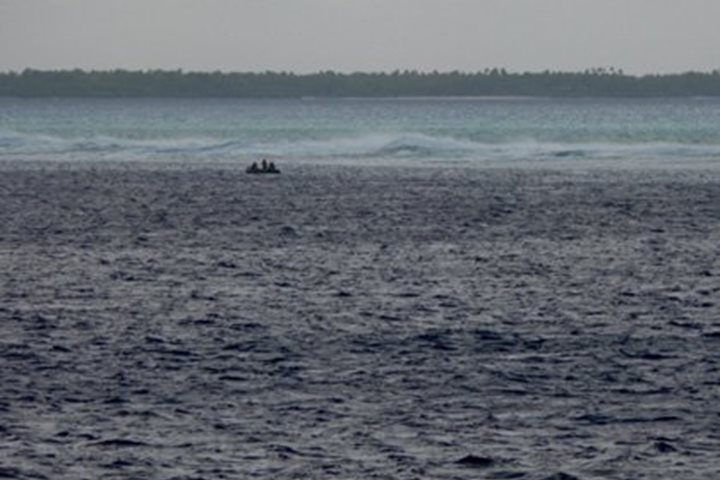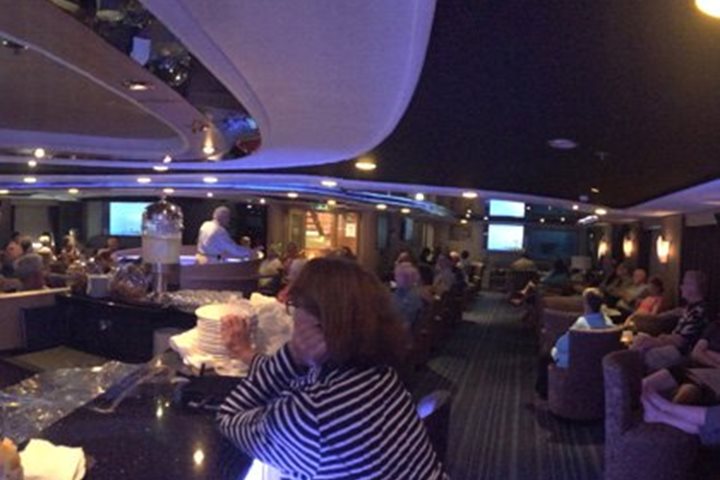The bright Fijian sun rose to greet National Geographic Orion and its passengers on the windward side of the lush “Garden Island,” Taveuni. In the cool of the morning birders and hikers fanned out into the forest with local guides from the nearby villages that have organized to protect much of the local land and seascape for ecotourism opportunities. The birdlife turned out in full force with appearances by a host of species found only on the islands of Fiji including Fiji Goshawks and the Fiji Shrikebill. Amongst the coconut palms flitted the endemic collared lorries (“kula” in Fijian), a vibrantly red parrot with green wings and a purplish blue cap. Some were even lucky enough to catch site of the elusive Fiji orange dove, with its traffic-cone coloured body and bright green head making its strange plinking call to advertise its territory.
Various groups of hikers set out to explore the coastal forest and stunning waterfalls that make Taveuni famous. Three sets of cascades at Bouma Falls gave guests the opportunity to leap from rocks or enjoy a leisurely swim in the clear-clear pool of their choosing. The groups setting out to Lavena Falls enjoyed a hike along coastal forest and small farms. Our guide pointed out some of the plants essential to the Fijian way of life like the root crops taro and casava or the pandanus tree, whose leaves are used to make mats. The trail wended its way along the reef-fringed coast before arriving at a beautifully clear river in which we took a brief swim to the bottom of the falls.
After a delicious lunch back on board National Geographic Orion we returned to the island to be welcomed by the villagers of Waitabu (pronounced “why-tom-bu”). In keeping with the Fijian culture a sevusevu was held—a traditional presentation of kava root to the chief asking permission to enter the village, land, and sea. The kava root was solemnly prepared for drinking by running water through the pulverized or powdered fibers of the root. Drinking of kava is not only vital to these ceremonies but a typical part of everyday life in Fiji with the mellowing, muddy-water drink that numbs the tongue often pointed to as a major reason Fiji is such a happy and peaceful country. Once the chief and our leaders had drunk, the formal portion of the ceremony concluded and serious faces all began to beam with the excitement as the village high-schoolers emerged. Keeping alive the traditional dances that have disappeared in many parts of Fiji, the children performed a meke, or series of dances and songs accompanied by tapped rhythms on sticks. These dances harken back to the not-so-distant past of cannibalism with the boys painted for battle and brandishing ornate war clubs. For this reason the missionaries strongly discouraged mekes but tourism and shifting attitudes towards their past have brought a revival of these dances to some parts of Fiji.
After the meke, some continued to explore the village, drink kava, and sample some of the local foods like palasami, taro leaves cooked with coconut milk and onions in the traditional pit fires called “lovo.” Adventurous snorkelers were taken by local guides who proudly showed them the results of 17 years of protection for a portion of their reefs. The villagers of Waitabu established one of the first marine protected areas in Fiji the network of which now number more than 300 with spectacular results. Although the coral has been recently damaged by cyclones and bleaching, large food-fish like sweetlips, snapper, and smooth head parrotfish, rarely seen as more than a few small individuals, formed schools with dozens of fish. Such a healthy fish community promises to pave the way for the reef’s recovery if other conditions can stabilize. As the sun sank lower and the kava bowls were drained we said our goodbyes, happy to have spent time in such a beautiful place, but everyone at least a little sad to leave such wonderful people and scenery behind.






